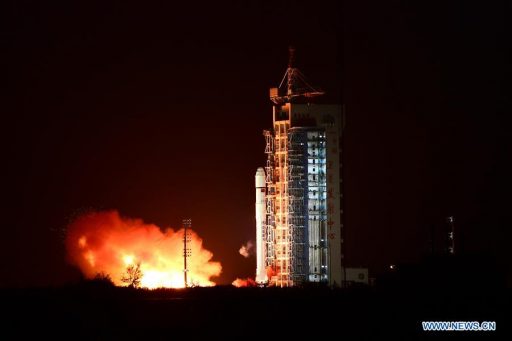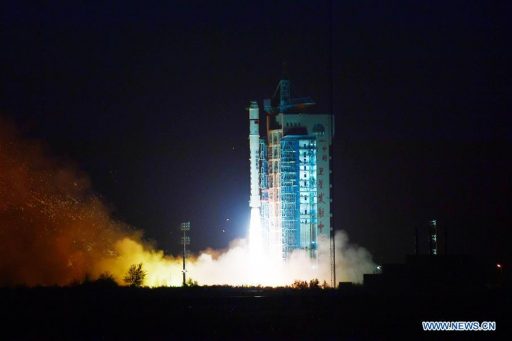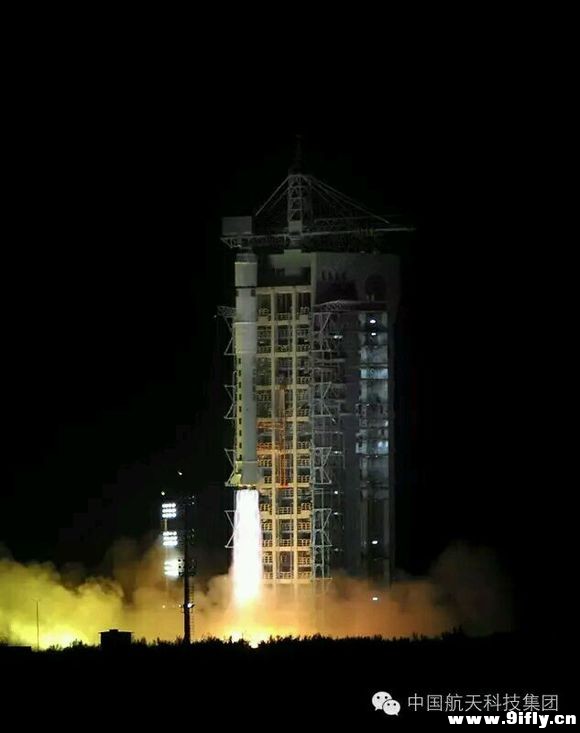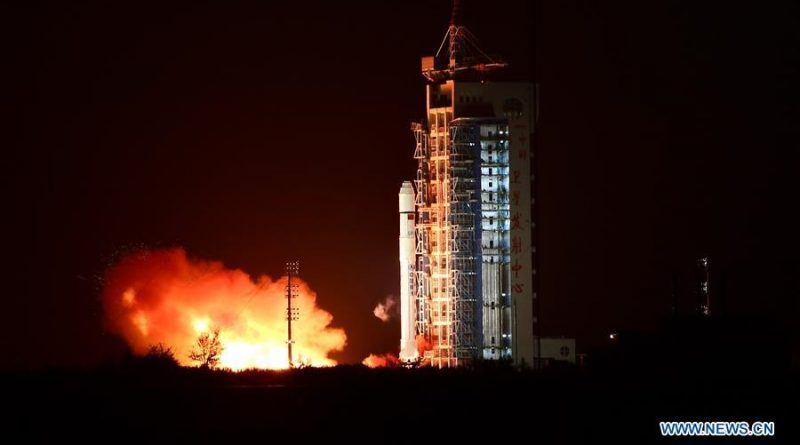Successful Yunhai-1 Launch inaugurates new Chinese Weather Satellite Constellation

China’s Long March 2D rocket blasted off from the Jiuquan Satellite Launch Center Friday night, lifting into orbit the Yunhai-1 weather satellite to mark the inauguration of a new constellation of meteorological satellites orbiting Earth in polar orbits.
Long March 2D lifted off from the LC-43/603 launch complex at Jiuquan at 23:14 UTC on Friday, 7:14 a.m. local time Saturday morning and successfully lifted the satellite to an orbit over 700 Kilometers in altitude. It was the second launch from Jiuquan in a period of two days following the second Long March 11 mission that lifted the XPNAV-1 Pulsar Navigation Test Satellite and multiple secondary payloads into orbit.
No specifics on the Yunhai-1 (01) satellite are available other than it was built by the Shanghai Academy of Spaceflight Technology (SAST). According to the official launch announcement by Chinese state media, the satellite will be used for “observation of atmospheric, marine and space environment, disaster prevention and mitigation, and scientific experiments.”

The satellite’s name translates to Cloud-Sea and it is understood that it uses radio occultation measurements for cloud and atmospheric observations. It is likely that the Yunhai-1 component of the new low-orbiting constellation will be primarily used for data collection for the civilian sector while a second series of satellites will fly under the Yunhai-2 designation and collect data for use by the military, similar to the United States Defense Meteorological Satellite Program that is operated in strict separation to civilian programs.
The Yunhai satellites expand China’s Fengyun meteorological satellite program that operates satellites from Geostationary and Sun Synchronous Orbits in an architecture similar to other agencies’ weather satellite programs. Fengyun (Wind & Cloud) dates back to 1988 and currently operates its second generation of polar-orbiting satellites and upcoming is the launch of the first third generation Geostationary Satellite.
Orbital tracking data shows two objects related to Friday night’s mission, one in a 760 by 787-Kilometer, 98.5° orbit (presumably the satellite) and one in a 747 by 798km orbit, 98.4° (likely the CZ-2D rocket body).

Long March 2D can launch Payloads of up to 3,500 Kilograms to Low Earth Orbit and has a SSO capability of up to 1,300kg. The CZ-2D Launcher was developed by the Shanghai Academy of Spaceflight Technology and is capable of delivering payloads into a variety of Orbits, including Low Earth Orbit and Sun Synchronous Orbit. Long March 2D features two stages, the first is identical to the Long March 4 Vehicle while the second stage is based on CZ-4, but has a modified equipment bay.
The Launcher stands 41.06 meters tall, has a diameter of 3.35 meters and a liftoff mass of 232,255 Kilograms. For the first 170 seconds of Flight, the vehicle is powered by its first stage that is equipped with a YF-21C Engine that provides a thrust of 2,962 Kilonewtons. The stage is 27.91 meters long, 3.35 meters in diameter and filled with 183,200 Kilograms of Unsymmetrical Dimethylhydrazine and Nitrogen Tetroxide Propellants for a total weight of the first stage at launch of 192,700kg.
After first stage burnout and jettison, the second stage starts controlling the flight. The upper Stage is 10.9 meters in length and has the standard CZ-2D diameter weighing 45,600kg at liftoff. It also uses UDMH and NTO as propellants. A total of 39,550 Kilograms are aboard its tanks at blastoff. The second stage is powered by a YF-24C main engine providing 742 Kilonewtons of thrust and a 47.1-Kilonewton Vernier Thruster. Long March 2D can be outfitted with two different payload fairings to accommodate payloads of different sizes. The fairings have diameters of 2.90 and 3.35 meters. The large fairing is 6.98 meters in length.
The Jiuquan Satellite Launch Center which is also known as Shuang Cheng Tze launch center was China’s first launch facility being established in 1958. It is located in the Gobi Desert about 1,600 Kilometers from Beijing.
This launch marked the 240th mission of a Long March rocket, it was China’s 18th launch of 2016 with several more expected before the end of the year.

